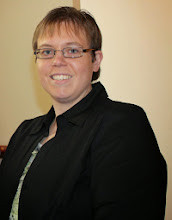The Project-Based Learning approach is an instructional method built upon authentic learning activities that engage student interest and motivation. These strategies are designed to answer a question or solve a problem and generally reflect the types of learning and work people do in the everyday world. There classes are designed with an emphasis of assisting a group of diverse students to become college and career ready as they graduate high school. The design principles which encompass this program include personalization, adult world connection, college/career ready, and teacher as designer.
When developing a Project-Based Learning lesson you are Starting with the end in mind. So here's what Project-Based Learning isn't? Jeff Robins a High Tech High Art teacher outlines the misunderstandings of Project-Based Learning.
During the workshop we learned that the 6A's for Project Development are essential when developing a Project-Based Learning project with the end in mind. The 6A's include authenticity, academic rigor, applied learning, active exploration, adult relationships, and assessment. This resource was taken from Real Learning, Real Work by Aria Steinberg (Boston, Massachusetts: Jobs for the Future, 1997).
Another district similar to the G2 model is Praire High School or known as Prairie2. They are implementing a similar Project-Based Learning model as Muscatine within their district. This will be their second year within the model and have been very pleased with the results and of their students.
High Tech High located in San Diego, CA: Began in 2000 as a single charter high school launched by a coalition of San Diego business leaders and educators. It has since than evolved into an integrated network of schools spanning grades K-12, housing a comprehensive teacher certification program and a new, innovative Graduate School of Education. A presenter Chris Wakefield shared some of the projects he has done with his 9th grade physics class. Take a look at Chris's portfolio and explore what you can do in your classroom. Another presenter from High Tech High was Diana Sanchez who is an English/Literature Teacher in San Diego. Take a look at Diana's portfolio and explore what you can do in your English classroom for ideas.
Over the past few days I was able to work with a group of educators to create a project-based learning design, structure the design for success, and project tuning. The project-based learning allows for collaboration and team-building among staff members for critiques within the project tuning process. When listening to the staff members the resounding message was when coming up with a project-based design, to steer towards your passion and love of teaching and this will enlighten your students to the subject matter.
Another district who has embraced the Project-Based Learning Approach was Manor New Technology High School, in Manor Texas. Take a look at what changes they have implemented into their school district.
Here are some online resources which have an enormous amount of resources for you to utilize within your classroom for Project-Based Learning.
Project-Based Learning: Explained
Project-Based Learning: The Online Resource for PBL
Project-Based Learning for the 21st Century Learner
Cybrary Man's Educational Web Site: Project-Based Learning
A great book to take a look is: An Ethic of Excellence: Building a Culture of Craftsmanship with Students by Ron Berger.
It's the 21st Century we must prepare our students for their future, not our past.





.JPG)








